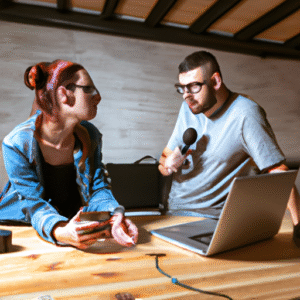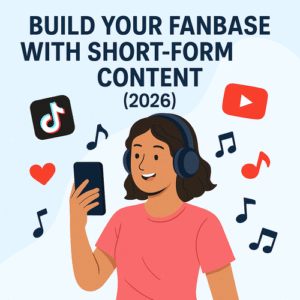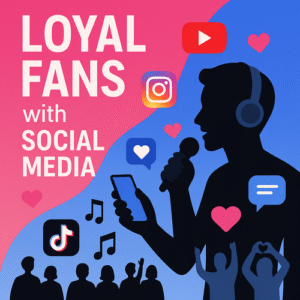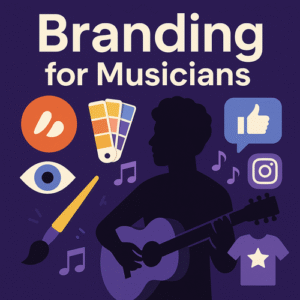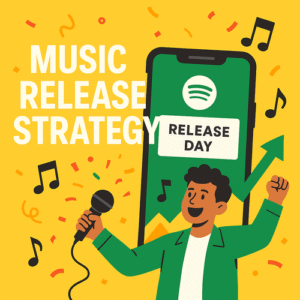Collaboration is a powerful way for independent musicians to expand their audience, develop new skills, and bring fresh energy to their projects. In 2025, it’s easier than ever to connect and create with artists from all over the world. Whether you want to co-write songs, remix tracks, or launch a joint release, collaborating with other musicians can open doors to new opportunities and help you grow your fanbase. Here’s a complete guide to building meaningful collaborations that make an impact.
Why Collaborate? The Power of Musical Partnerships
Collaborating with other artists isn’t just about sharing credits on a song. It’s about combining your strengths, experimenting with new sounds, and learning from each other. Collaboration allows you to:
- Reach new audiences as both artists promote the project to their fans
- Cross genres or experiment with different musical styles
- Share resources, skills, and ideas for better music production
- Build long-term relationships in the music industry
- Make the creative process more fun, inspiring, and motivating
For many independent artists, a great collaboration can lead to playlist placements, press coverage, and even viral success. It’s also a chance to build your network, which can pay off for years to come.
Finding the Right Artist to Collaborate With
Start by looking for artists whose style, values, and ambitions align with yours. This doesn’t mean they have to be in the same genre, but you should respect each other’s craft and have similar expectations for the project. Consider collaborating with:
- Musicians you admire in your local scene or on social media
- Producers or beatmakers who complement your sound
- Singers, rappers, or instrumentalists with a unique voice
- Songwriters, lyricists, or topliners
- Visual artists or videographers for music video collaborations
Use platforms like Instagram, TikTok, YouTube, and Bandcamp to discover emerging artists. Attend open mics, join music forums, or participate in online songwriter groups to connect with creative people.
How to Reach Out for a Collaboration
A thoughtful, personalized message is the key to starting a great partnership. When reaching out:
- Introduce yourself clearly and mention why you admire their work
- Suggest a specific project, idea, or vibe for the collaboration
- Share your music, links, or previous collaborations for context
- Explain what you hope both of you will gain from working together
- Keep it friendly and concise
Be open to brainstorming. Sometimes the best collaborations start with a simple conversation and develop organically over time.
Setting Expectations and Planning the Project
Before you dive in, get on the same page about:
- Creative roles: Who does what? Who writes, produces, mixes, or sings?
- Project goals: Is this a single, EP, remix, live show, or video?
- Timeline: When do you want to finish? Are there key deadlines?
- Financials: How will costs, revenue, or royalties be split?
- Promotion: How will you both market and release the finished project?
A simple written agreement (even an email or shared doc) helps avoid misunderstandings and keeps the project on track.
Collaborating Remotely: Tools and Workflow
In today’s digital world, collaborating from a distance is the norm. Here are some tools to make the process smooth:
- Cloud-based DAWs like Soundtrap, BandLab, or Splice for real-time music creation
- Google Drive or Dropbox for sharing stems, mixes, and ideas
- Video chat platforms (Zoom, Discord, FaceTime) for writing sessions or feedback
- Project management apps (Trello, Slack, Notion) to track progress and keep everyone aligned
Be sure to organize your files, name everything clearly, and back up your work. Set regular check-ins or deadlines to maintain momentum.
Making the Collaboration Stand Out
To create something truly special, focus on blending your unique strengths. Let each artist bring their own flair—don’t just copy each other. Experiment with co-writing lyrics, swapping verses, or trading production duties. If you’re collaborating across genres, embrace the differences and see what new sounds emerge.
Think visually, too. Plan a joint photoshoot or create artwork together. Consider making a “making-of” video or doing a livestreamed Q&A for fans. The more immersive the project, the greater the impact.
Releasing and Promoting Your Collaborative Track
A well-planned release is crucial. Decide together how and when to put out your song—will it be on both artists’ Spotify profiles? Which distributor will you use? Make a promo plan:
- Announce the collaboration on both artists’ social channels
- Share behind-the-scenes content or teasers before the release
- Tag and thank each other in every post and story
- Pitch to playlists, music blogs, and influencers in both of your genres
- Go live together for a release day stream or Q&A
Cross-promotion means your music reaches a wider audience and both artists benefit from the buzz.
Handling Credits, Royalties, and Legal Details
Decide early how you’ll handle songwriting credits, splits, and royalties. If you’re releasing the song independently, tools like DistroKid and Songtrust let you specify each collaborator’s share. For more complex projects, consider using a simple split sheet or legal template to document everything.
Make sure everyone is happy with the final mix, artwork, and credits before you upload. Transparency and trust keep your partnership strong for future projects.
Learning from Each Collaboration
Every music collab is a chance to grow. After you’ve released the project, take time to reflect. What worked well? What challenges did you face? What would you do differently next time? Celebrate your successes and thank your collaborator publicly. Stay in touch—you never know when you’ll want to work together again.
Real-World Collaboration Stories
Artists like Billie Eilish and FINNEAS, Disclosure and Sam Smith, or local indie bands have all seen their careers skyrocket through the right collaborations. Even smaller, indie acts can go viral with a well-timed feature, remix, or joint release. Keep an eye on music news and see how your favorite artists approach partnerships.
FAQ: Collaborating as an Independent Artist
Look for musicians whose style, values, and goals align with yours. Use social media, music forums, and your local scene to discover new collaborators.
A simple written agreement (even an email) about splits, roles, and deadlines helps avoid confusion. For bigger projects, use a formal contract.
It’s OK! Thank the other artist for their time and keep the door open for future projects. Every experience teaches you something.
Absolutely. Remote tools make global collaborations easier than ever. Be mindful of time zones and language barriers.
Work together on a promo plan, announce the collab on both artists’ channels, and cross-promote through playlists, livestreams, and social media.
Splits vary—most artists agree on equal shares unless one party contributes more to writing or production. Decide before release and document your agreement.
Conclusion: Collaboration Fuels Independent Music Success
Collaborating with other artists is one of the fastest, most rewarding ways to grow as a musician, reach new fans, and create unique music. Approach every partnership with respect, clear communication, and a spirit of adventure. With the right preparation and attitude, your next collaboration could take your music further than you ever imagined.
